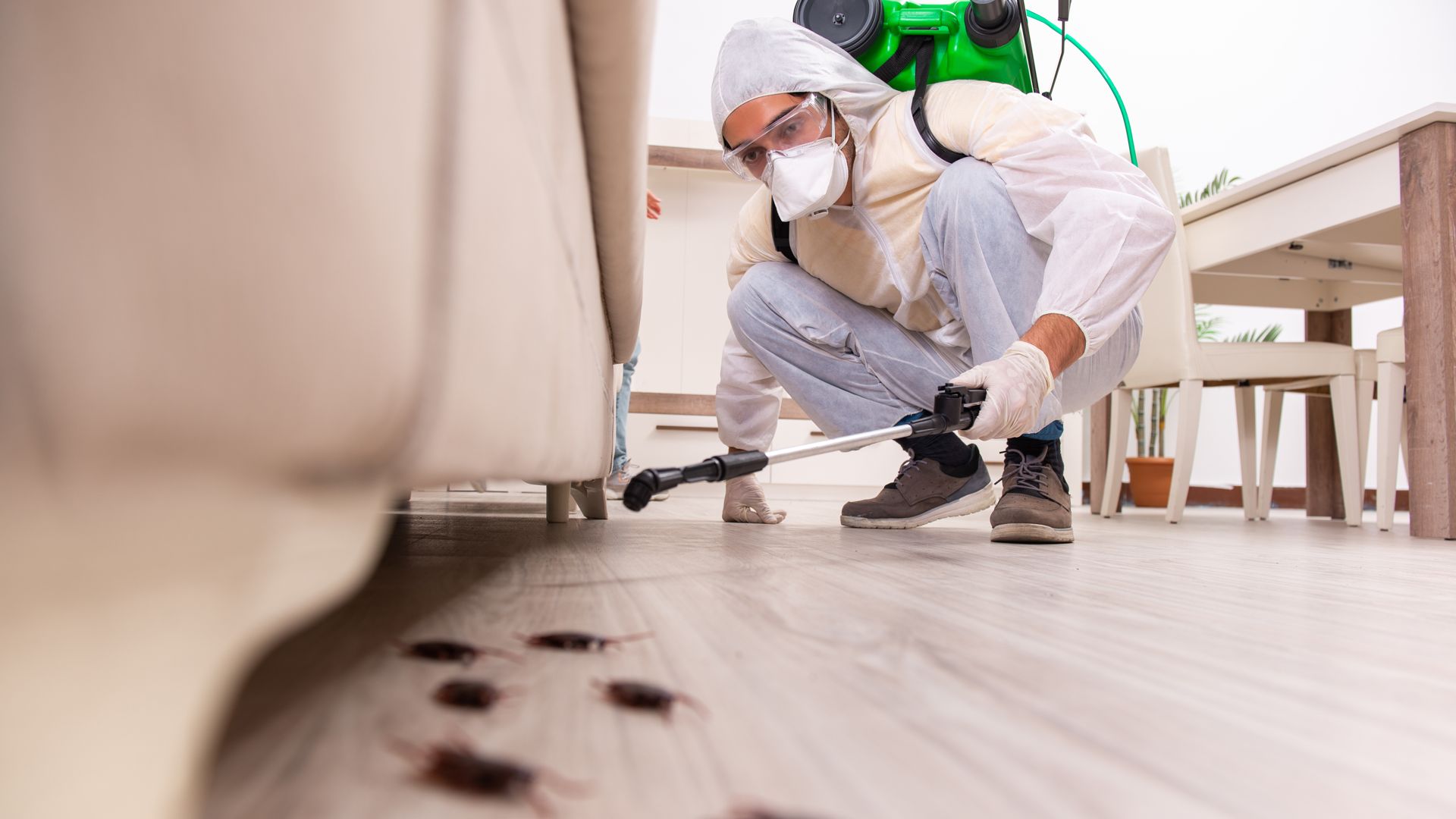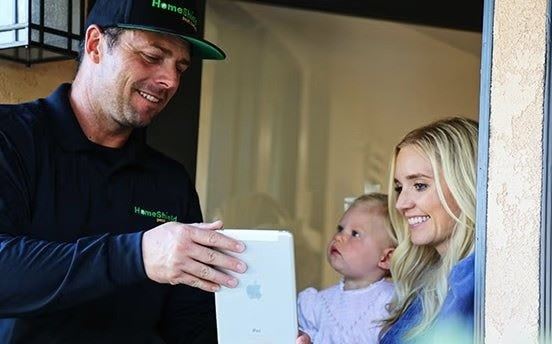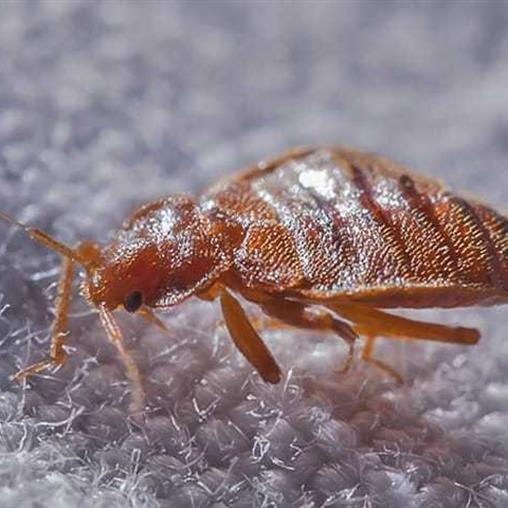
The best way to get rid of bed bugs in your home
If you're fortunate to catch bed bugs early, you may be able to eliminate them by moving the infested item outside and treating it. We're not talking about your mattress, box spring, or bed frame. We're referring to a suitcase, book bag, duffel bag, or some other portable item. If bed bugs are in your bed, there is a good chance that they're in other places in your bedroom as well. Treating your bed or throwing your bed out is not likely to correct your infestation and you will likely require professional-grade bed bug treatments to get rid of them. However, there is hope if you find bed bugs in a portable item.
The Best Solution For Bed Bugs In Orange County
If you live in Orange County, let the licensed pest control professionals here at HomeShield Pest Control evaluate your bed bug infestation and perform a bed bug treatment to ensure the eradication of those bugs. We use field-tested methods and EPA-approved products to ensure effective remediation.
If you have questions about our Orange County pest control services, or you'd like to request a service for your home, reach out to us. We're here to assist you with all your pest concerns. You don't have to let those bed bugs bite. Get relief today!
Bed Bug Extermination Tips
When you find signs of bed bugs including black feces, shed skins, tiny white eggs, or bed bugs themselves in a portable item, there are a few ways to address the problem:
- Items that can be put through a 30-minute dryer cycle can be treated that way. High heat can kill bed bugs in all stages of development.
- Items that can't be put in the dryer, but are small enough to go in a freezer, could be treated by placing them in a freezer. Like high temperatures, low temperatures can also kill bed bugs. The freezer must maintain a temperature lower than 0°F. Put your item in a plastic bag before you put it in your freezer. Once in the freezer, leave it there for at least four days.
- If an item can't go in your dryer or freezer, out the door it goes. Bring it outside and see if you can treat the item. An obvious infestation can be treated on contact with isopropylamine alcohol. Keep in mind that this treatment method is only effective when applied directly to bed bugs. Don't use this method for items that have interior voids or for treating your home. Contact a licensed professional to perform a treatment.
The Pitfalls Of DIY Bed Bug Control
There are many ways you can attempt to get rid of bed bugs and fail. It is important that you are aware of a few of the most common. This is not a comprehensive list; it is meant as a guide.
- Heat kills bed bugs when it is appropriately applied, but if you put space heaters around your home, you are not going to eliminate bed bugs. They'll find cold spots to hide from the heat.
- Synthetic insecticides can kill bed bugs but it is difficult because bed bugs have developed a resistance to many of the products used on them. On top of this, many of these products are topical. They don't get into the voids, gaps, and tight spaces where bed bugs hide.
- A combination of mattress and pillow encasements along with traps at the base of your beds may be able to arrest a bed bug infestation. Unfortunately, you can pay out the money to perform this treatment and fail to stop the bed bugs in your home because they're living inside your bed frame, or they learn to avoid the traps and find someone else in your home to feed on.
- There are many suggestions on the internet for natural bed bug remediation. We don't recommend them. They just don't work. You can cover your home in diatomaceous earth and not arrest your infestation. You can spray every surface in your home with a vinegar and water solution and not arrest your infestation. These natural solutions must be performed in a specific way to have any success at all—not unlike the use of rubbing alcohol which we mentioned above.
- You may be told that you can spray your home with a natural smell that drives bed bugs out, such as peppermint or lavender. This doesn't work. Bed bugs are not outdoor pests. They prefer to live indoors. They will put up with the bad smells because they don't have any other choice. They won't survive outside.
When you attempt to exterminate bed bugs on your own, it can lead to frustration, continued bites, and a waste of money and energy. Bed bugs aren't easy to control. If they were, these indoor pests would be extinct?—yet, they're still with us. Why? Because they are strong insects with natural abilities that help them avoid extermination. It is best to hire someone with pest control training and experience.

Our California Pest Control Services
In California, We Provide Reliable Home Pest Control And Commercial Pest Control Solutions.
Why Our Customers Love Us
HomeShield Pest Control received an average rating of 5.0 out of 5 stars from over 8000+ reviews.
-
Homeshield was great to work with!“Homeshield was great to work with! My wife and I encountered a really bad termite problem at our new home during the renovation phase, and needed treatment asap so that renovation could resume. Mike drove all the way down for an inspection, and was very thorough in his explanations. He was able to match a competitor's price for the treatment and locked in a day for the following week. Daniel and Elias, the technicians, were very communicative about their ETA and did a good job explaining their respective roles. All in all, a quick and easy process. Thank you, Homeshield!”- James Y.
-
Pleasant, friendly and respectful.“Bronson announced his arrival and departure. He inquired if there was anything specific that we wanted done prior to him starting his regular service. Pleasant, friendly and respectful.”- Joseph S.
-
Will continue using homeshield!“
Amazing work! Switched from Terminex as I was tired of having scheduling issues and wanted something eco friendly for my dogs and upcoming baby.
”
I definitely recommend trying to get Jose Garcia as your technician as he was very communicative and kept us updated throughout the service process.
Will continue using homeshield!- Chris P.M. -
Humble and helpful. Does what ever we are asking for.“You guys provide very quality service. We are very happy with the service. Every time the person comes to our place to provide service is very humble and helpful. Does what ever we are asking for. Thank you.”- Arif S.
-
Excellent experience. Super professional and thorough“
Excellent experience. Super professional and thorough. Found them through yelp and they called immediately with affordable options and set up an appointment. The technician was wonderful. Would highly recommend.
”- Samantha S. -
Quote came within minutes and price was very reasonable.“
Dee provided a very thorough and detailed inspection. Walked us through the entire process and what we could expect throughout the initial services and beyond. Quote came within minutes and price was very reasonable.
”- Jason D. -
Ben was FANTASTIC“
Ben was FANTASTIC in every way, He came to give me an estimate on my home, was on time, polite, knowledgeable, and extremely professional in how he handled everything. Had 4 other termite co. to give me an estimate, not even close to Ben's expertise, I would give him a 10 if I could. Will definitely use him in all my other projects , they are a lot since I am in real estate and have many clients.
”- Judy M. -
Victor, was very professional, helpful and informative.“
We had a great experience. They were able to work with our schedule to make a quick appointment. The service professional, Victor, was very professional, helpful and informative.
”- Mark S.

Featured On









.svg.2405150737550.png)




